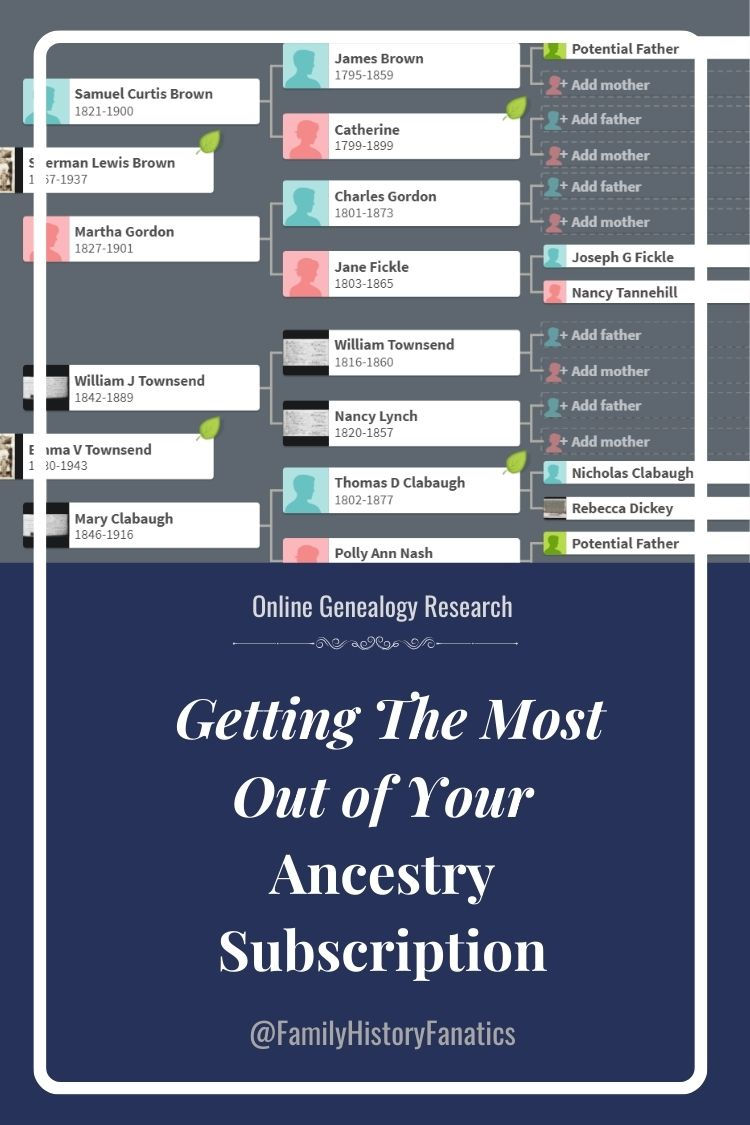5 Easy Tips For Getting The Most Out of Your Ancestry Subscription
- Devon Noel Lee

- Jan 18, 2021
- 4 min read
Updated: Nov 5, 2024

Frugal genealogists don't always look for free online genealogy resources. They make the most of the family history subscriptions they have. If you have an Ancestry.com subscription, follow these best practices to get the most out of your subscription and make your family tree climbing time more productive.
1. Customize Your Home Page (If this is still available for you)
There are several things you can do to make your Ancestry research home page work the way you research.
You can add or remove information widgets that include search forms, collection reminders, and tools to meet your needs.
Next, utilize your Ancestry Shoebox and To-Do List. Ancestry's "My Shoebox" is a great place to save records you haven't fully evaluated yet. The To-Do List on Ancestry allows you to leave yourself notes or links of what you still need to search. Take advantage of these tools to always know where you want to research next.
2. Customize Your Ancestor's Profile Page
Turn your Ancestor's profile page into an active workspace by adding MyTreeTags and notes. You can also use the Quick Edit forms to change your ancestor's names or their birth and death facts.
To make the most out of Ancestry ThruLines, ensure that you're marking biological and non-biological relationships in your family tree. Using the "Edit Relationship" feature you can add additional parents and change their relationship status from biological to adopted, guardian, foster, step, and private.
You can also hide the research tools such as member connect and view the tree from the profile page. This provides a clean look to your workspace. If you ever need to access the tools, you can use the drop-down menu near the quick edit tools.
3. Filter Your Hints on Ancestry.com
With your home page prepared and your ancestor's profiles ready to research, then leverage the power of automatic hints from Ancestry.
On the hinting page, you can filter by photos, stories, and records. Next, you can sort these results by last name, first name, or newest hint.
If you want to focus on one surname, you can key in that last name and only show hints for a surname like Ackerman or Townley.
After you filter your results, make use of the tools on the hinting page to view a quick comparison between the hint and your tree. You can accept or ignore the hint and explain why. You can also view your relationship with the person in the hint list.
↪️ Are you new to genealogy? Grab your copy of our FREE Genealogy Research Guides:
4. Read the Collection Pages on Ancestry.com Before You Search
Take time to review every collection page on Ancestry before you use the search forms.
You can learn more about the collection, and why it does or does not have images along with the searchable index.
Additionally, for a recordset like the one I featured in the blog post Easily Find Marriage Notices in Newspapers.com Using Ancestry, the collection page will let you view a timeline of updates. When I released that blog post, the latest update was October 2020. After I published the video, a new update to the marriage index collection happened in December.
You can view sample images and research hints.
The collection pages on Ancestry are also the gateways into their Browse Only Collections. For instance, the Boston, Massachusetts, U.S., Tax Records, 1822-1918 does not have an index to accompany the images.
But your ancestors might be in the collection if you're willing to digitally flip through the pages.
5. Search the Ancestry Card Catalog
Many Ancestry users are not taking advantage of the Card Catalog. There are collections that don't rise to the surface using search forms or record hints. As mentioned in tip four, there are some collections that don't have an associated search form.
As part of your genealogy research strategy, make sure you are filtering the card catalog page by collection type, location, and date.
Have you found the Buenos Aries City Census records? If you haven't, it might be because you're not using the card catalog.
Bonus Tip: Continue Learning How to Do Genealogy from Ancestry.com Experts
Ancestry is more than just an online family tree platform that helps you research their records and connect your DNA matches. It also provides a lot of learning through the Ancestry Academy (under Extra) and the Family History Learning Hub (under Trees). Take advantage of these resources to learn how to climb your family tree.

Continue Learning How to Use Ancestry.com:
A reference for all blog posts and videos mentioned in the YouTube episode.
.png)





Comments